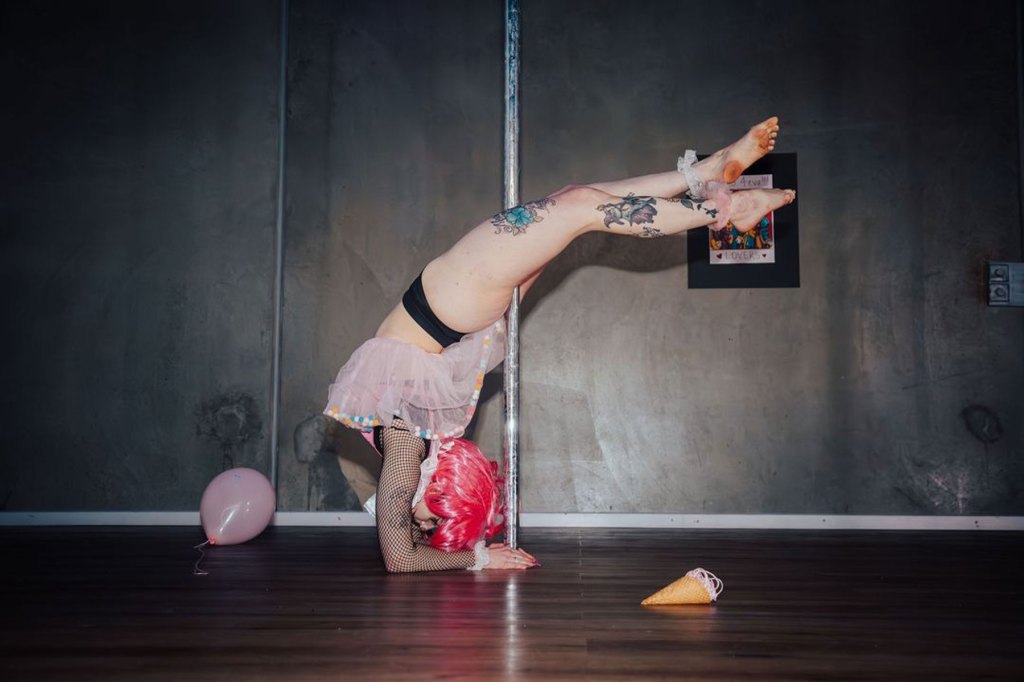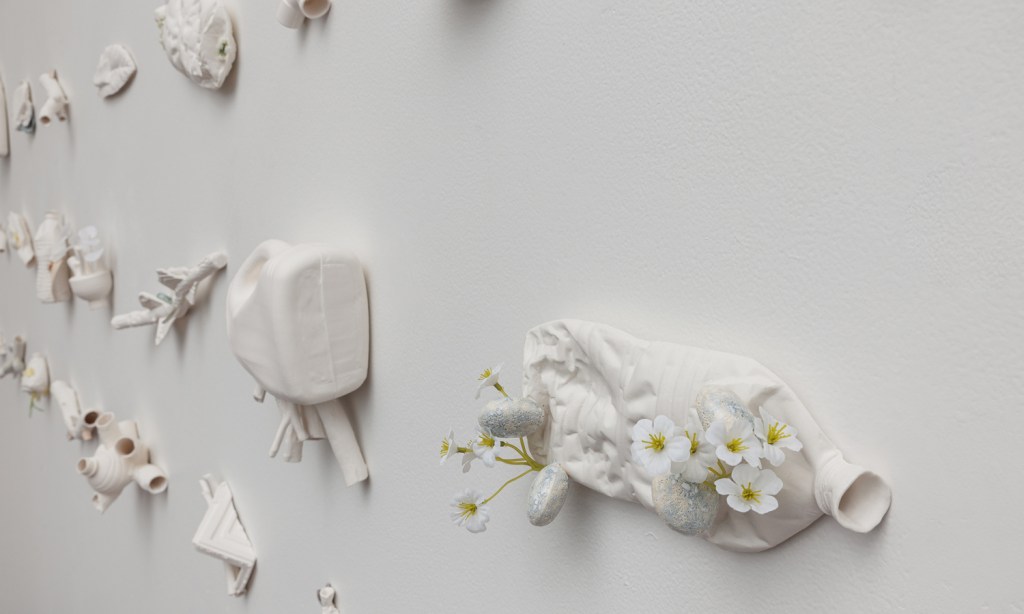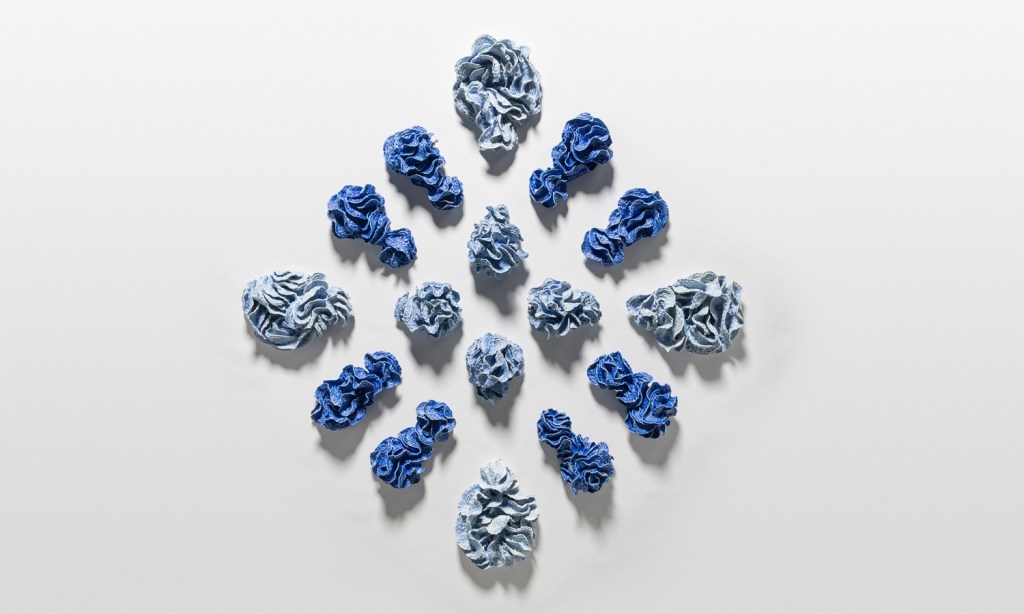The gravity-defying art of pole dancing
Is pole dancing really an art form? The answer is a definitive yes, according to Adelaide pole dancers, who are keen to challenge stereotypes about a practice that combines athleticism, creative expression and storytelling.

A dancer emerges from beneath a cloth, acting as a corpse that comes to life in an explosive display of strength and grace. This is the first of many performances at PhysiPole Somerton Park’s 2024 Halloween competition that blurs the line between athleticism and artistic expression. Dancers acting as clowns, witches, corpses and even Pennywise’s ex-girlfriend take to the stage. But beneath the Halloween horror, there’s a deeper story; one of personal expression, creative exploration and storytelling: the art of pole dance.
Pole dance is a misunderstood yet expressive art form. While often reduced to stereotypes of glamour or sexuality, it is a powerful medium for telling stories of any nature.

Ash Roxy. Photo: Rebekah Ryan Photography
As instructor Ash Roxy, from PhysiPole Somerton Park and the founder of Wings Up Academy, explains: “People sometimes judge pole dancing without knowing the essence of it. But for us, it’s about feeling better, creating a safe space, and expressing art in a powerful way.”
For dancers, pole dance is so much more than strength or technique; it’s a medium where movement becomes storytelling and the pole is a prop for character exploration.
Roxy brings a unique perspective to the art of pole. As a full-time dancer, choreographer and instructor with more than 12 years’ experience, she speaks of her creative process with passion.
“The first thing I need to do is listen to different songs… If I’m not feeling it, it’s not going to happen,” she explains.
You might like
For Roxy, it’s about connection, feeling the music, visualising the movements, and crafting a performance that impacts her audience and students. Her style – self-described as sexy, fun and strong – is a reflection of her belief that pole dance should push conventions.
“My choreographies are always powerful,” she says. “They’re fun, hard, and challenging… You want to improve, push yourself, and feel accomplished.”
Among the standout performances at the recent Halloween competition was a portrayal by pole dancer Jade (who prefers her last name not be used) of Pennywise the clown’s ex-girlfriend. It was an emotional rollercoaster played out through floor work, props and pole tricks.
Beginning with a gloomy sadness, Jade sat on the floor with a strawberry ice cream and pink balloon, her black, white and pink clown costume adding a playful contrast to the sorrow she conveyed. The routine moved from sadness to triumph, ending in a dynamic display of aerial tricks and quick combos. It was a raw, honest expression of a break-up, which drew on Jade’s four years of pole training, and a deep commitment to building the physical, rhythmic and mental capacity necessary to execute such a challenging performance.
“I like to tell some kind of story or express an idea through not only the song choice but also through costumes, make-up and props,” she says.
“It’s my way of expressing myself – rather than drawing, painting or writing my own music, I do it through pole.”
As Jade demonstrates, pole dance is an art form that can convey complex narratives and emotions, much like traditional dance styles and rituals. Pole dancers use the pole as both a tool for personal expression and as a medium to create an emotional experience for audiences.

Jade portrays Pennywise’s ex-girlfriend in her creative pole routine. Photo: Da Rocha Photography
Subscribe for updates
Performers are also attracted to the sense of community created through pole. This was seen in the Halloween competition, which showcased not only individual talent but the mutual respect shared among participants.
“Half the fun is getting advice from instructors or your classmates, showing them the routine you’ve got so far, and getting feedback,” Jade says.
This supportive environment fosters creativity, allowing dancers to explore their artistic boundaries and gain confidence in their craft.
“It’s beautiful to have a safe space,” says Roxy. “My classes are just for girls, and that’s important because it is time for us to put ourselves in a better position to feel better about ourselves, looking in the mirror and loving what we see.”

Ash Roxy believes pole dance should push conventions. Photo: Rebekah Ryan Photography
The pole community is a space where women support each other, challenge stereotypes, and elevate the art of pole dance, whether it’s through an expressive routine, training their bodies for difficult tricks that defy gravity, or an emotionally fuelled combination of tricks and storytelling.
“I work in a very high-pressure, emotionally-tolling job, and this is one of the few ways that I can just completely switch off from whatever else is going on in my head,” says Jade, when asked why she pole dances.
“I am forced to be in the moment and in my body, because otherwise it’s not safe if you’re upside down at the top of the pole, four meters in the air. I’m not thinking about what happened at work today, or my anxiety about tomorrow and what’s going to happen. I’m there in the moment. So that’s really good therapy.”
There are many ways to engage with Adelaide’s pole community, with a number of local studios offering classes. PhysiPole Somerton’s Park next show is on December 7.
Brooke Ferguson, an emerging visual artist and arts worker, is the 6th recipient of the Helpmann Academy InReview Mentorship. She is working with experienced visual arts writer Jane Llewellyn to write a series of articles for publication in InReview.
Note: Brooke is also a regular student at PhysiPole.

